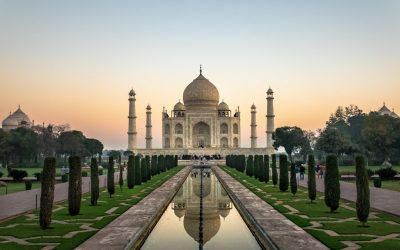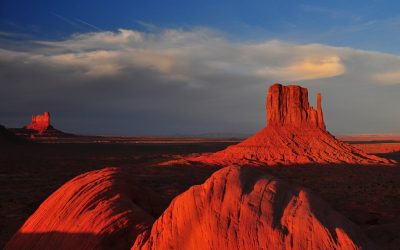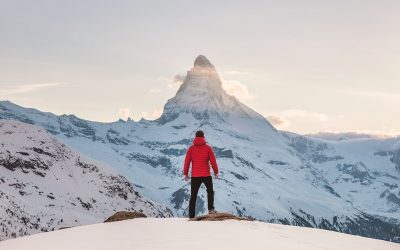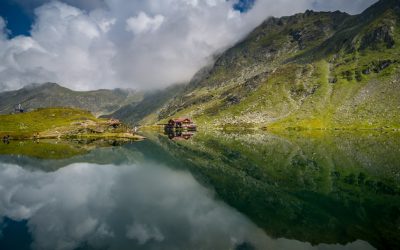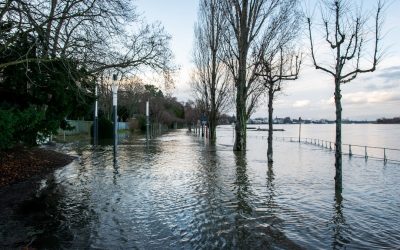World Geography
Geography is the study of the Earth’s landscapes, environments, and the relationships between people and their surroundings. It encompasses both the physical aspects of the Earth, such as its landforms, bodies of water, and climate, as well as the human aspects, including population distribution, cultures, and economies. World geography is a broad field that seeks to understand the complexities of our planet and how humans interact with it. By studying world geography, we can gain a deeper appreciation for the diversity of our planet and the interconnectedness of its various regions.
Geography is a multidisciplinary field that draws on elements of physical science, social science, and humanities. It involves the use of maps, spatial analysis, and geographic information systems (GIS) to understand the Earth’s surface and the processes that shape it. World geography also encompasses the study of human geography, which examines the ways in which people and their activities are distributed across the Earth. By understanding world geography, we can better appreciate the environmental, cultural, and economic challenges facing different regions of the world. This knowledge is crucial for addressing global issues such as climate change, resource management, and international development.
The Five Oceans and Seven Continents
The Earth’s surface is divided into five major oceans: the Pacific, Atlantic, Indian, Southern (or Antarctic), and Arctic Oceans. These vast bodies of water play a crucial role in regulating the Earth’s climate and supporting diverse marine ecosystems. The oceans also serve as important transportation routes and a source of food and other natural resources for human societies around the world.
In addition to the oceans, the Earth’s landmasses are divided into seven continents: Africa, Antarctica, Asia, Europe, North America, Australia (or Oceania), and South America. Each continent has its own unique physical and cultural characteristics, shaped by millions of years of geological processes and human history. From the deserts of Africa to the rainforests of South America, the continents offer a rich tapestry of landscapes and environments for exploration and study.
Major Mountain Ranges and Deserts
The Earth’s surface is also marked by major mountain ranges and deserts that have shaped the planet’s physical and cultural landscapes. The Himalayas, for example, are the highest mountain range in the world and are home to diverse ecosystems and cultures in countries such as India, Nepal, and Bhutan. The Andes in South America, the Rockies in North America, and the Alps in Europe are other prominent mountain ranges that have influenced human settlement patterns and economic activities.
Deserts cover about one-third of the Earth’s land surface and are characterized by low precipitation and extreme temperatures. The Sahara Desert in Africa is the largest hot desert in the world, while the Gobi Desert in Asia is one of the largest cold deserts. Deserts are not only home to unique flora and fauna but have also been important trade routes and cultural crossroads throughout history.
Climate Zones and Biomes
The Earth’s climate is influenced by a variety of factors, including latitude, altitude, ocean currents, and prevailing winds. As a result, the planet is divided into different climate zones, each with its own characteristic weather patterns and ecosystems. The equator, for example, experiences a tropical climate with high temperatures and heavy rainfall, while the polar regions have a cold and dry climate.
These climate zones give rise to different biomes, or large ecological areas characterized by distinct plant and animal communities. The tropical rainforest biome, found near the equator, is home to a diverse array of species and is vital for regulating the Earth’s climate. The grasslands biome, found in regions such as the African savannah and North American prairies, supports grazing animals and has been important for human agriculture throughout history.
Human Geography and Population Distribution
Human geography examines the ways in which people and their activities are distributed across the Earth’s surface. It encompasses topics such as population growth, migration patterns, urbanization, and cultural diversity. Understanding human geography is crucial for addressing global challenges such as poverty, inequality, and environmental degradation.
Population distribution is uneven across the world, with some regions experiencing rapid population growth while others are declining. The majority of the world’s population lives in Asia, particularly in countries such as China and India. Urban areas are also growing rapidly, with more than half of the world’s population now living in cities. This trend has significant implications for infrastructure development, resource management, and social inequality.
Historical and Cultural Geography
Historical geography examines how human activities have shaped the Earth’s landscapes over time. It explores topics such as colonialism, trade routes, and the rise and fall of empires. Cultural geography focuses on how human cultures have developed in different regions of the world and how they interact with their environments.
The Silk Road, for example, was an ancient trade route that connected China with Europe and facilitated the exchange of goods, ideas, and technologies across Eurasia. This historical trade route had a profound impact on the development of cultures and economies along its path. Similarly, cultural geographers study how different societies have adapted to their environments through practices such as agriculture, architecture, and religious beliefs.
The Importance of Geographic Knowledge
Geographic knowledge is crucial for addressing global challenges such as climate change, resource management, and international development. By understanding world geography, we can better appreciate the environmental, cultural, and economic challenges facing different regions of the world. This knowledge is crucial for addressing global issues such as climate change, resource management, and international development.
Geographic knowledge also helps us to understand our interconnectedness with other regions of the world. By studying world geography, we can gain a deeper appreciation for the diversity of our planet and the interconnectedness of its various regions. This understanding can foster a sense of global citizenship and empathy for people from different cultures and backgrounds.
In conclusion, world geography is a complex and multifaceted field that encompasses both physical and human aspects of the Earth’s landscapes. By studying world geography, we can gain a deeper appreciation for the diversity of our planet and the interconnectedness of its various regions. This knowledge is crucial for addressing global challenges such as climate change, resource management, and international development. It also helps us to understand our interconnectedness with other regions of the world and fosters a sense of global citizenship.
FAQs
What is world geography?
World geography is the study of the Earth’s landscapes, environments, and the relationships between people and their environments. It encompasses the physical features of the Earth, as well as the human activity that takes place on it.
Why is world geography important?
World geography is important because it helps us understand the world around us. It provides insights into the physical and human processes that shape our planet, and helps us make informed decisions about how to interact with our environment.
What are the main branches of world geography?
The main branches of world geography include physical geography, which focuses on the Earth’s natural features and processes, and human geography, which examines the relationships between people and their environments.
How does world geography impact our daily lives?
World geography impacts our daily lives in numerous ways, from influencing the weather and climate we experience, to shaping the availability of natural resources and influencing the distribution of populations and cultures around the world.
What are some key concepts in world geography?
Key concepts in world geography include location, place, human-environment interaction, movement, and region. These concepts help geographers understand and interpret the world around them.
Nevada
Nevada, also known as the Silver State, is a state located in the western region of the United States. It is bordered by Oregon to the northwest, Idaho to the northeast, California to the west, Arizona to the southeast, and Utah to the east. With an area of approximately 110,577 square miles, Nevada is the 7th largest state in terms of land area. The state’s capital is Carson City, while its largest city is Las Vegas. The nickname “Silver State” comes from Nevada’s rich history of silver mining. In the mid-19th century, silver was discovered in the state, leading to a silver rush and a boom in mining activity. Nevada quickly became one of the leading producers of silver in the United States. The nickname not only reflects the state’s historical significance in silver mining but also symbolizes its wealth and prosperity. Summary Nevada is known as the Silver State due to its rich mining history. The state has a diverse geography, including deserts, mountains, and lakes. Nevada experiences hot summers and cold winters, with low humidity throughout the year. The economy of Nevada is heavily reliant on tourism, mining, and gaming industries. Nevada has a vibrant culture, with art, music, and festivals celebrated throughout the state. History of Nevada: From Wild West to Modern Times Nevada has a fascinating history that dates back thousands of years. The area that is now Nevada was originally inhabited by Native American tribes such as the Paiute, Shoshone, and Washoe. These tribes lived off the land and had a deep connection to the natural resources of the region. In the mid-19th century,...
Nebraska
Nebraska, also known as the Cornhusker State, is a landlocked state located in the Midwestern region of the United States. It is bordered by six states – South Dakota to the north, Iowa to the east, Missouri to the southeast, Kansas to the south, Colorado to the southwest, and Wyoming to the west. Nebraska is known for its vast agricultural lands and is often referred to as the “breadbasket of America”. Agriculture plays a crucial role in the state’s economy, making it one of the leading producers of corn and beef in the world. Summary Nebraska is known as the Cornhusker State due to its vast corn production. The state has a diverse geography, ranging from prairies to sand dunes and even a small mountain range. Nebraska has a rich history, with Native American tribes and pioneers shaping its development. Agriculture is a major industry in Nebraska, with corn and beef being the top products. Visitors can enjoy the state’s natural beauty through its national parks and wildlife reserves. Geography and Climate of Nebraska Nebraska covers an area of approximately 77,354 square miles, making it the 16th largest state in the United States. The state is characterized by its diverse topography, ranging from rolling hills in the east to the Great Plains in the west. The eastern part of Nebraska is home to fertile farmland, while the western part consists of grasslands and sandhills. The climate in Nebraska varies from humid continental in the east to semi-arid in the west. Summers are typically hot and humid, with temperatures often reaching into the 90s Fahrenheit. Winters are cold and can...
Montana
Montana, also known as “The Treasure State,” is a state located in the western region of the United States. It is the fourth largest state in terms of land area and has a population of approximately one million people. Montana is known for its stunning natural beauty, diverse wildlife, and rich history. The state got its nickname due to its abundance of natural resources, including gold, silver, copper, and coal. Summary Montana is known as the Treasure State and boasts a rich history, diverse geography, and unique cuisine. From mountains to plains, Montana’s geographical features offer a variety of outdoor activities such as hiking, fishing, and skiing. Montana’s history is deeply rooted in Native American culture and the cowboy way of life. Montana is a nature lover’s paradise with an abundance of wildlife and natural wonders, including Glacier National Park and Yellowstone. Montana’s economy is driven by agriculture, mining, and tourism, with famous landmarks such as Glacier National Park and Yellowstone attracting visitors from around the world. Montana’s Geographical Features Montana is home to a diverse landscape that includes the majestic Rocky Mountains, vast plains, and numerous rivers and lakes. The Rocky Mountains dominate the western part of the state, providing breathtaking views and opportunities for outdoor activities such as hiking, skiing, and mountain climbing. The eastern part of Montana consists of the Great Plains, which are characterized by rolling hills and grasslands. Montana is also home to several national parks and wilderness areas, including Glacier National Park and Yellowstone National Park. Glacier National Park is known for its stunning glaciers, pristine lakes, and abundant wildlife. Yellowstone National Park...
Missouri
Located in the heart of the United States, Missouri is often referred to as the “Gateway to the West.” This nickname is not without reason, as Missouri played a crucial role in the westward expansion of the country. Situated between the Mississippi River and the Missouri River, the state served as a starting point for pioneers and explorers venturing into the unknown territories of the American West. Summary Missouri is known as the Gateway to the West, due to its location as a crossroads for trade and travel. Missouri has a rich history, from the Lewis and Clark expedition to its role in the Civil War. The geography of Missouri is diverse, with the Ozark Mountains and the Mississippi River among its notable features. Missouri has a vibrant culture, with a strong tradition of music, art, and literature. The economy of Missouri is driven by agriculture, manufacturing, and tourism, with many opportunities for growth and development. The History of Missouri: From Lewis and Clark to the Civil War Missouri’s history is deeply intertwined with the westward expansion of the United States. In 1804, the famous Lewis and Clark expedition set off from St. Louis, Missouri, on their journey to explore the newly acquired Louisiana Purchase. This expedition opened up new opportunities for trade and settlement in the West, and Missouri became a key hub for these activities. However, Missouri’s history is not without its dark moments. During the mid-19th century, tensions between pro-slavery and anti-slavery factions escalated, leading to violent conflicts. Missouri was a border state during the Civil War, with residents divided in their loyalties. The state saw...
Mississippi
Mississippi, also known as the Magnolia State, is located in the southern region of the United States. It is bordered by Tennessee to the north, Alabama to the east, Louisiana to the south, and Arkansas to the west. The state’s nickname, the Magnolia State, comes from the abundance of magnolia trees that can be found throughout its landscape. Mississippi’s state symbols include the magnolia flower as the state flower, the mockingbird as the state bird, and the magnolia tree as the state tree. Summary Mississippi is known as The Magnolia State and is located in the southern United States. The state has a rich history, from Native American settlements to the Civil Rights Movement. Mississippi boasts natural beauty, including rivers, forests, and beaches. The state has a vibrant cultural heritage, with music, art, and literature playing a significant role. Mississippi has produced many famous residents, including writers, musicians, and athletes. History of Mississippi: From Native American Settlements to Civil Rights Movement Mississippi has a rich and complex history that dates back thousands of years. Before European settlers arrived, the area was inhabited by various Native American tribes, including the Choctaw, Chickasaw, and Natchez. These tribes had established thriving communities and had developed their own unique cultures and traditions. In the 16th century, European explorers began to arrive in Mississippi, with Spanish and French explorers being among the first. The French established settlements along the Gulf Coast and along the Mississippi River. The area became a French colony known as La Louisiane. Mississippi played a significant role in the Civil War and Reconstruction era. As a southern state, it seceded...
Minnesota
Minnesota, also known as the North Star State, is a state located in the Midwestern region of the United States. It is known for its beautiful landscapes, friendly people, and vibrant culture. In this blog post, we will explore the many attractions and unique aspects of Minnesota that make it a must-visit destination. Whether you are interested in exploring the great outdoors, immersing yourself in arts and culture, or cheering on your favorite sports team, Minnesota has something for everyone. Summary Minnesota is known as the Land of 10,000 Lakes, making it a popular destination for water activities and scenic views. From Native American settlements to modern times, Minnesota has a rich history that can be explored through various museums and historical sites. Minnesota’s state parks and wildlife offer opportunities for hiking, camping, and wildlife watching. The state’s arts and culture scene is thriving, with museums, theatres, and festivals showcasing local talent and international works. Minnesota’s food and drink scene is diverse, with classic diners, craft breweries, and farm-to-table restaurants offering something for everyone. Minnesota: The Land of 10,000 Lakes Minnesota is often referred to as the Land of 10,000 Lakes, and for good reason. The state is home to an abundance of lakes, rivers, and waterways that play a significant role in its culture and economy. The nickname actually underestimates the number of lakes in Minnesota, as there are actually over 11,000 lakes scattered throughout the state. The lakes in Minnesota provide endless opportunities for outdoor recreation such as fishing, boating, swimming, and kayaking. They also serve as a habitat for a diverse range of wildlife and contribute...
Michigan
Michigan, also known as the Great Lakes State, is located in the Midwestern region of the United States. It is surrounded by four of the five Great Lakes, making it the only state to have such a unique geographical feature. The state’s nickname, the Great Lakes State, highlights the importance of these lakes to Michigan’s identity. The Great Lakes not only provide stunning natural beauty but also play a crucial role in Michigan’s economy and recreational activities. Summary Michigan is known as The Great Lakes State due to its location on the shores of four of the five Great Lakes. Michigan has a rich history and culture, including being the birthplace of the automotive industry and Motown music. Michigan’s natural beauty includes stunning landscapes such as Sleeping Bear Dunes National Lakeshore and Pictured Rocks National Lakeshore. Michigan’s economy is diverse, with industries such as manufacturing, agriculture, and tourism contributing to its success. Michigan is home to world-class institutions and programs, including the University of Michigan and Michigan State University. Michigan’s Rich History and Culture Michigan has a rich history that dates back thousands of years. Before European colonization, the area was inhabited by various Native American tribes, including the Ojibwe, Odawa, and Potawatomi. These tribes had a deep connection to the land and waterways of Michigan, relying on them for sustenance and trade. In the 17th century, French explorers arrived in Michigan and established settlements along the St. Lawrence River and the Great Lakes. The French influence can still be seen today in place names and cultural traditions. However, control of Michigan was later transferred to the British during...
Massachusetts
Massachusetts, located in the New England region of the United States, is a state known for its rich history, vibrant culture, and stunning natural beauty. It is bordered by the Atlantic Ocean to the east and is surrounded by the states of New Hampshire, Vermont, Connecticut, Rhode Island, and New York. With an area of approximately 10,554 square miles, it is the 7th smallest state in the country. Massachusetts is often referred to as the “Bay State” due to its numerous bays and harbors along its coastline. The state’s official nickname is “The Commonwealth of Massachusetts,” highlighting its status as a self-governing entity. The state symbols include the Mayflower as the state flower, the American Elm as the state tree, and the chickadee as the state bird. The population of Massachusetts is approximately 6.9 million people, making it the 15th most populous state in the country. The capital and largest city is Boston, which is known for its rich history and vibrant cultural scene. Other major cities in Massachusetts include Worcester, Springfield, Lowell, and Cambridge. Summary Massachusetts is a state with a rich history, diverse population, and thriving economy. From the Pilgrims to the present day, Massachusetts has played a significant role in American history. The state’s natural beauty includes beaches, mountains, and forests, making it a great destination for outdoor enthusiasts. Massachusetts is home to world-class schools and universities, making it a hub for innovation and research. Visitors can enjoy cultural attractions such as museums and landmarks, as well as sports and recreation activities like skiing and baseball. The History of Massachusetts: From the Pilgrims to the Present...
Maryland
Maryland, located in the Mid-Atlantic region of the United States, is a state with a rich history and diverse geography. It is bordered by Pennsylvania to the north, Delaware and the Atlantic Ocean to the east, Virginia and West Virginia to the south, and Washington D.C. to the west. The state’s geography varies from coastal plains to rolling hills and mountains in the west. Maryland has played a significant role in American history. It was one of the original 13 colonies and was founded in 1634 as a refuge for English Catholics. The state was named after Queen Henrietta Maria, wife of King Charles I of England. During the American Revolution, Maryland was known as the “Old Line State” because of its strong support for the Continental Army. It also played a crucial role in the Civil War, with battles such as Antietam and Gettysburg taking place on its soil. Summary Maryland is a state located in the Mid-Atlantic region of the United States with a rich history dating back to the colonial era. The state’s economy is diverse, with major industries including healthcare, biotechnology, and manufacturing, and a strong job market in fields such as education and government. Maryland is home to several prestigious universities, including Johns Hopkins University and the University of Maryland, as well as a number of highly regarded public and private schools. The state boasts a robust healthcare system, with top-rated hospitals and medical centers serving both residents and visitors. Maryland’s transportation infrastructure includes a network of highways, railways, and airports, making it easy to get around the state and beyond. Maryland’s Economy: Industries...
Maine
Maine, located in the northeastern part of the United States, is the northernmost state in New England. It is bordered by New Hampshire to the west and the Canadian provinces of Quebec and New Brunswick to the north and east, respectively. With a population of approximately 1.3 million people, Maine is the least densely populated state in the country. The state’s economy is diverse, with major industries including tourism, fishing, manufacturing, and agriculture. Summary Maine is a state located in the northeastern region of the United States. Maine has a rich history and culture, with a strong maritime tradition and a significant role in the American Revolution. The geography of Maine is characterized by its rugged coastline, dense forests, and numerous lakes and rivers. Some of the most famous landmarks and tourist attractions in Maine include Acadia National Park, Portland Head Light, and the Maine Maritime Museum. Maine is home to a diverse range of wildlife and natural resources, including moose, lobster, and blueberries. History and Culture of Maine Maine has a rich Native American history, with several tribes calling the area home for thousands of years before European settlement. The Wabanaki Confederacy, which includes the Penobscot, Passamaquoddy, Maliseet, and Micmac tribes, has a strong presence in the state. These tribes have a deep connection to the land and continue to maintain their cultural traditions. European exploration and settlement began in the early 17th century, with French and English explorers vying for control of the region. The French established a settlement at Port Royal (now Annapolis Royal) in present-day Nova Scotia, while the English established settlements along the coast...
Louisiana
Located in the southern region of the United States, Louisiana is a state known for its rich history, vibrant culture, and natural beauty. It is often referred to as “The Pelican State” due to the abundance of pelicans found along its coastlines. With a population of approximately 4.6 million people, Louisiana is a diverse state that is home to a mix of cultures and traditions. Summary Louisiana is known as The Pelican State and is located in the southern United States. Louisiana has a rich history and culture, influenced by French, Spanish, and African American traditions. The state is home to beautiful bayous, swamps, and wetlands, which are important ecosystems and tourist attractions. Louisiana’s cuisine is famous for dishes like gumbo and jambalaya, which reflect the state’s diverse cultural influences. New Orleans is the heart of Louisiana’s music and festival scene, with famous landmarks like the French Quarter and Mardi Gras. The History and Culture of Louisiana Louisiana’s history is deeply rooted in its colonial past, which has had a significant impact on the state’s culture. The French were the first Europeans to settle in Louisiana, establishing a colony in 1699. The Spanish took control of the territory in 1763, but it was returned to France in 1800 before being sold to the United States as part of the Louisiana Purchase in 1803. The influence of African American, Native American, and French cultures can be seen throughout Louisiana. African Americans have played a crucial role in shaping the state’s culture, particularly through their contributions to music, cuisine, and language. Native American tribes such as the Choctaw, Houma, and Chitimacha...
Kentucky
Kentucky, also known as the Bluegrass State, is a state located in the southeastern region of the United States. It is known for its beautiful landscapes, rich history, and vibrant culture. In this blog post, we will explore the various aspects that make Kentucky a unique and fascinating destination. From its early Native American settlements to its role in the Civil War, from its natural wonders to its culinary delights, from its sporting traditions to its arts and culture scene, we will delve into all that Kentucky has to offer. Summary Kentucky has a rich history, from its frontier days to becoming a commonwealth. The Bluegrass State boasts natural wonders, including Mammoth Cave and the Red River Gorge. Kentucky’s culinary delights range from bourbon to fried chicken, with a focus on Southern comfort food. Horse racing is a major sporting tradition in Kentucky, but the state also offers opportunities for hunting and fishing. Kentucky’s arts and culture scene is diverse and includes everything from bluegrass music to contemporary art. The History of Kentucky: From Frontier to Commonwealth Kentucky has a long and storied history that dates back thousands of years. The area was originally inhabited by Native American tribes such as the Cherokee, Shawnee, and Chickasaw. European exploration and settlement began in the late 17th century, with French explorers claiming the land for France. However, it was ultimately ceded to Britain after the French and Indian War. During the American Revolutionary War, Kentucky played a crucial role as a frontier territory. It was a site of many battles between American settlers and Native American tribes allied with the British....


